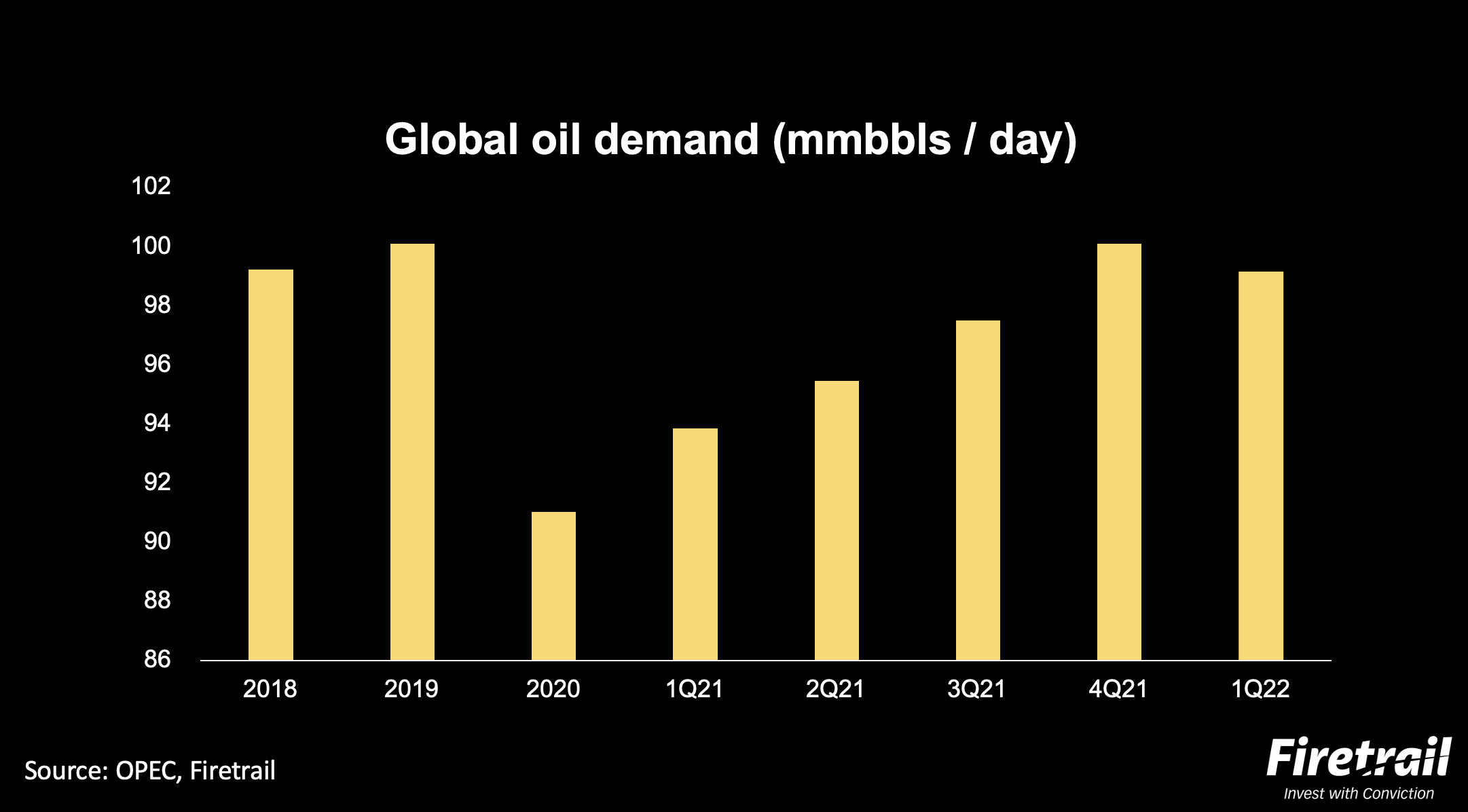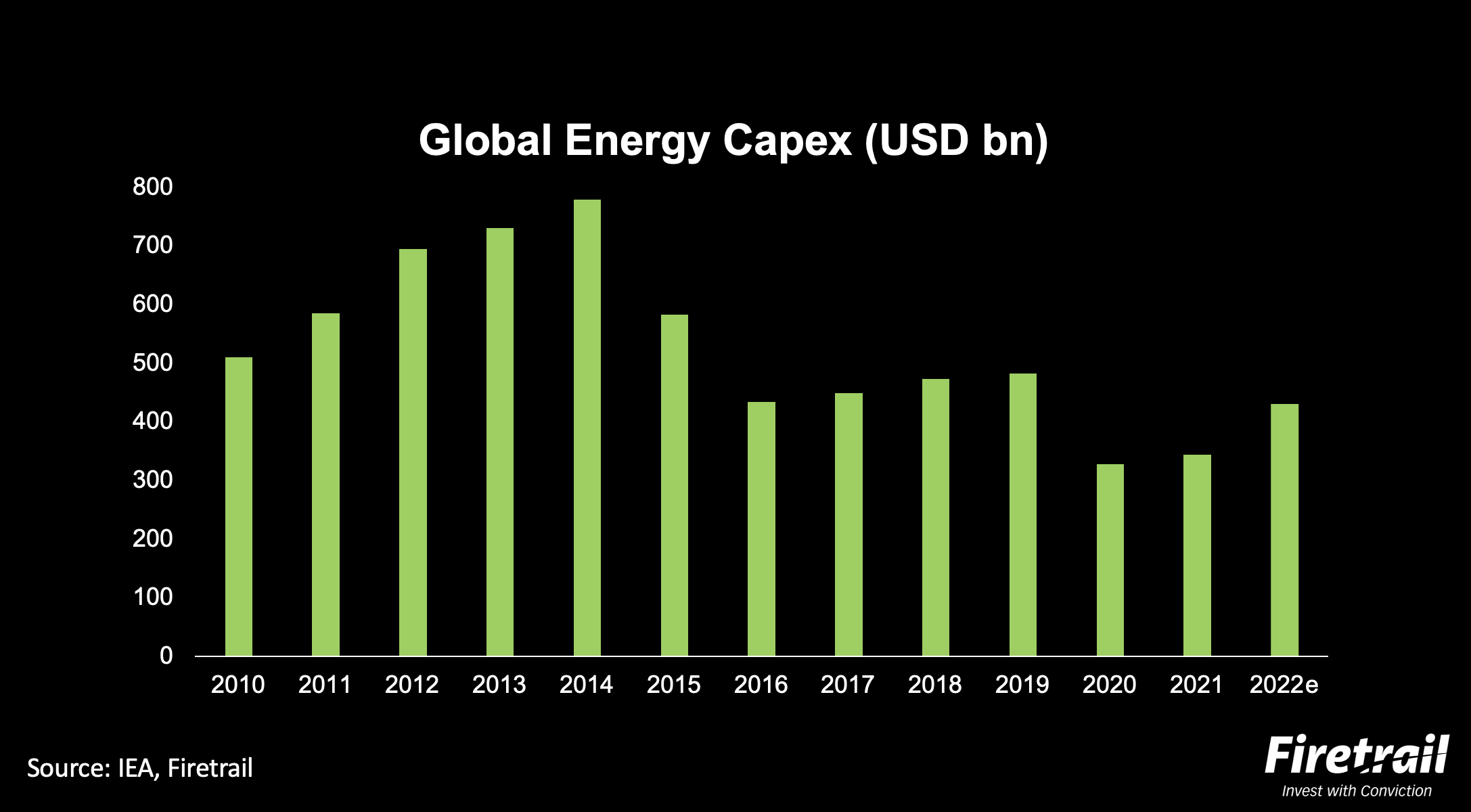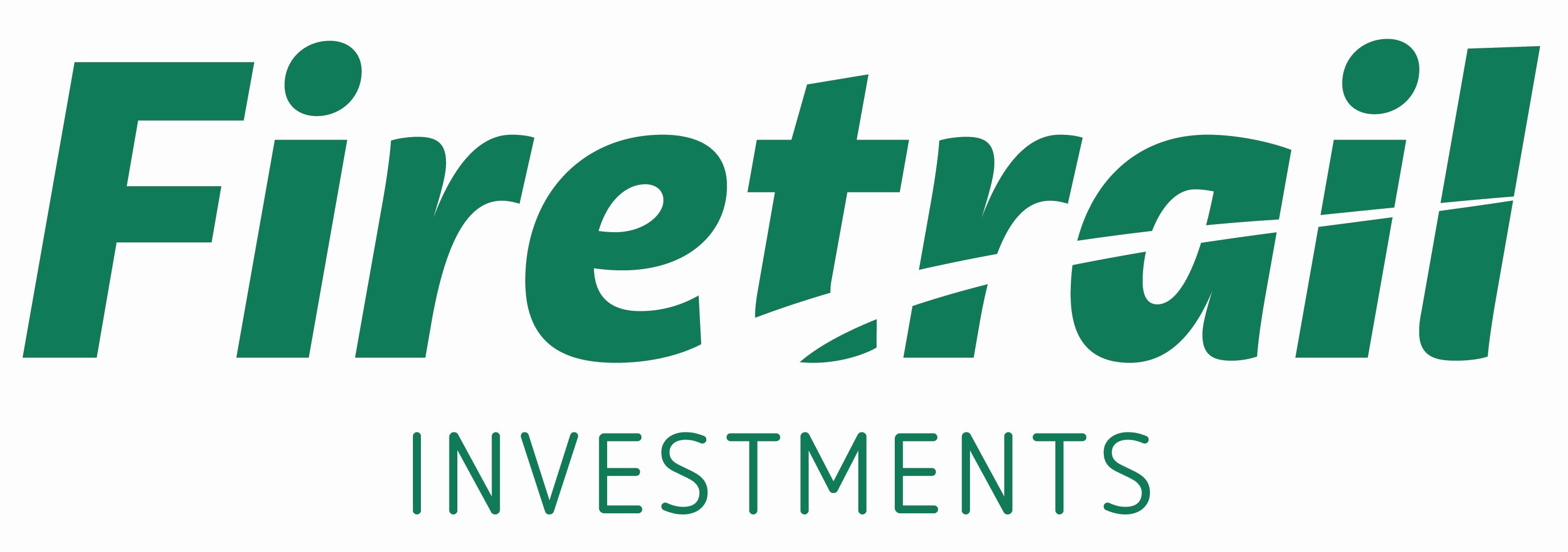The energy market is set to fire up
In the second episode of the Firetrail Investments Analyst Series 2022, Eliza Clarke & Blake Henricks take a deeper dive into the market dynamics at play for energy right now. Every other day we hear how oil and gas companies are being disrupted by the shift toward renewables. And that’s true, but cleaner energy alternatives are still some way off – there’s no switch that can flick the world over to renewable power sources overnight.
There are compelling reasons why the traditional energy theme still makes sense, certainly in the short to medium term, said Blake Henricks, Firetrail's Deputy Managing Director and Portfolio Manager of the Firetrail Australian High Conviction Fund.

The sector was beaten up during the peak of the COVID pandemic, when oil demand dipped by around one-fifth – or around 20 million barrels per day. But demand is already back to pre-pandemic levels and will be higher still by the end of this year when it’s set to push past 100 million bpd. Why?
The COVID recovery, for one thing. More aircraft in the sky as travel restrictions are dumped means greater demand for jet fuel.
He also expects China's demand should have recovered by then, as the nation's latest struggles with COVID will hopefully be in the background.
“In the short term, demand has rebounded a lot faster than people expected,” says Hendricks.
Electric vehicles
Something else moving faster than most of us expected is the uptake of Electric vehicles. But as Hendricks points out, even Norway – which is leading the global uptake of EVs by a country mile – hasn’t seen national oil demand plummet. And the use of oil to power our transportation is more nuanced than you might think – delivery vans and trucks are likely to need petrol even once EV usage by Joe and Jane Public has reached a critical mass.
The most important metric to watch
The supply-side is also a key consideration. For various reasons, including lower energy usage during COVID and the anticipation of more renewable power sources, means less oil and gas was being produced. Lower oil prices mid-pandemic also reduced the incentive to produce the resources. This, in turn, saw capital expenditure on new projects decline.
“Capex is too low, and it typically takes three to seven years to bring a new oil project online – so we believe that medium-term oil dynamic is going to be strong,” Hendricks says.
“Even if you lifted CAPEX tomorrow, it’s going to take time for those projects to deliver – so the supply outlook looks pretty tight to us.”
He says global energy CAPEX is the most important indicator to watch, as shown below.

In the following interview, Henricks joins Firetrail’s Investment Specialist Eliza Clarke for a deep dive into the sector. He also details one of his highest-conviction Australian stocks with which the Firetrail team is playing this investment theme.
Edited transcript
Eliza Clarke: Hello. Welcome back to the Firetrail Analyst Series. I'm Eliza Clarke, Investment Specialist at Firetrail. Joining me today is Blake Henricks, Deputy MD at Firetrail and Portfolio Manager of the High Conviction Fund. Blake, welcome.
Blake Henricks: Thanks for having me, Eliza.
Eliza Clarke: Let's talk energy. We saw oil as a hot commodity through quarter one of 2022. Crude started the year off at $76 a barrel, and got up to nearly $124 in the quarter. It's settled at around $100 for now. Who knows what's going to happen next? But we know with commodities, the two key things that matter are demand and supply. So, if we start off on the demand side today, could you take us through what's happening there right now?
Blake Henricks: The oil market is around 100 million barrels a day. And in the depths of COVID, we were hitting down in the low 80s, high 70s. So it was pretty tough. But what we've seen is a steady return of demand over time, with OPEC just recently releasing the March quarter demand for the world, and you're looking at just off 100 million barrels a day. So, we've almost fully recovered.
It's interesting that, in the short term, because economic growth is so strong, they're forecasting demand to get up to between 102 and 103 million barrels a day by the end of this year. And that'll be driven by a couple of things. The first one is a return of jet fuel because we're still not flying as much as we used to, especially on those long-haul flights. And the second thing is at the moment demand's being impacted by China lockdowns. And so a return of that as well. So in the short term, I think demand's rebounded a lot faster than people thought. And we're now back at pre-COVID levels.
Eliza Clarke: So that's the update on the short term. But if we're looking at the long term, everyone's talking about EVs. I think everyone I know is planning on getting one. How is that going to impact oil demand?
Blake Henricks: The first thing we want to do is look back through history, and what we've seen over time, and you can see in this chart here that demand has grown steadily over the long term. EVs are going to change things, and I'll go into that in a moment. But the second thing is developed markets have really been flat for quite an extended period. Really what's been driving oil growth has been emerging markets, as they industrialise and grow from very low levels. And so you can't always extrapolate what you are currently seeing because the global oil market is a big one and it's really driven by emerging markets.
Now, when it comes to EVs, they're coming in a lot faster than probably even we thought a couple of years ago. I think there's a really interesting case study here, which is Norway. Norway's one of the leaders, if not the leader in electric vehicle penetration. You can see in this chart just how quickly EVs have grown. You know, you're talking almost 80% EV penetration, and that's of new car sales. So they're up near 80%. But have a look at this chart. And this one talks about Norway's oil demand. And what you can see, it's been pretty flat for quite an extended period. And so even with that very strong growth in EVs, you've still seen oil demand is fairly robust. And Norway is broadly a developed market.
Now, why is that? Well, there are a couple of reasons. The first one is that oil is used extensively in petrochemicals. You know, things we see and touch, our mobile phones, cars, whatever it is. The second thing is that oil is also used for vans, for deliveries. Now, all these things are going to change over time, but there are a lot of industrial applications outside of just passenger vehicles and that EV threat.
I think in the long term, we are going to continue to see EVs cause a drop off in oil growth. But we've been saying for quite an extended period now, don't expect to see that until later in the 2020s.
Eliza Clarke: All right. Sounds like there's strong demand. Balancing that out, what's going on in supply?
Blake Henricks: That's where it gets interesting. For any commodity, you just need to look at supply. That's where you should focus because that's the most important thing. So there are three key areas of supply. The first one is U.S. shale or what we call tight oil. That industry has been in full-growth mode, really, probably up until 2014 when Saudis put the foot down on their throat. They then came off. They came back.
COVID’s now hit them again. Where we are today, we think the U.S. can grow in tight oil, but there is much more discipline driven by shareholder demands for higher returns. So we should expect to see more, maybe one to two million barrels a day for a little while, but we believe that there's not going to be as stronger growth as you would've otherwise expected even at current prices because of that shareholder discipline.
The second area you need to look at is OPEC, which has been holding production back. They've had these quotas out there. What's been interesting over the last 18 months is they've missed the quotas, I think it's something like 14 months consecutively, where they just haven't reached what they said they would reach. That's telling us that perhaps OPEC is at or near some of their max capacity. And if you do go through that demand scenario I talked about, we're at 100 today, 103 by the end of the year, they may have very little spare capacity.
The final one is sort of the catchall, which is non-OPEC, non-U.S. And the best way to think about that one is on this chart here because this chart shows you the CAPEX for the industry. And this is the key chart. You know, I think if you're looking at the oil markets and energy markets, this is the one to look at because CAPEX is too low for the demand outlook we're seeing both in the short term and in the medium term. And that's been driven by a range of things, shareholder returns, ESG concerns, where people didn't want to invest. We've had COVID, where people felt it was the peak cycle of oil demand. We're now seeing even higher demand than that.
So, there's been a whole lot of reasons, but the fact is CAPEX is too low. It typically takes three to seven years to bring a new oil project on. So in our view, that medium-term oil dynamic is going to be strong because even if you lifted CAPEX tomorrow, it's going to take time for those projects to deliver. So the supply outlook looks pretty tight to us.
Eliza Clarke: Now, playing into that energy thematic, Santos is one of our highest conviction positions in the fund today. Could you take us through what matters for them, and why it's such a compelling opportunity?
Blake Henricks: The oil price is always the first thing that matters with any energy stock. But the second thing is really their low-cost positions and their disciplined approach to capital. So, the first thing is the free cash flow break-even of Santos is around $25 a barrel. That may go up a little bit in the next year or two, but they've actually got some really high-returning projects, including an LNG project in Northern Territory. And at the moment, especially with concerns around Ukraine, Russia, and European gas, the LNG project looks to be a very high-returning project. They've also got an oil discovery in WA, and they've even got a pretty good returning carbon capture and storage project in South Australia.
Blake Henricks: So, they've got these opportunities to allocate capital at very high returns. And we believe when we run those through the break-even drops from mid-$20 a barrel down to below $20 a barrel. And that means, especially at over $100 a barrel, there's a lot of free cash flow there for shareholders.
Now, one of the challenges I think of Santos, if we go back a year ago, because of all this CAPEX they were spending, the break-even was probably close to $60 a barrel. And so it looked like they weren't going to generate much free cash flow. Subsequent to that, they have taken over Oil Search at a very good point in the cycle. And now what they're undergoing or undertaking is an attempt to sell down some assets. If they are successful in that, we expect very high shareholder returns for the medium term for Santos shareholders. And that's what makes it a really exciting proposition.
Eliza Clarke: Great. Thanks for taking us through the energy market update today, Blake, and for what matters for Santos, one of the highest conviction positions in the High Conviction Fund right now. And thank you for joining us for the Firetrail Analyst Series.

4 topics
1 fund mentioned
2 contributors mentioned

